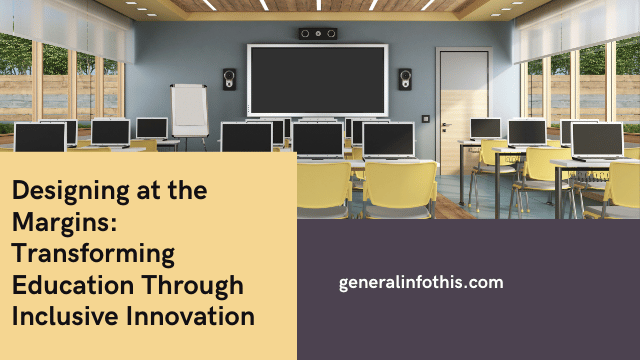Traditional education systems often cater to the average learner, leaving many students at the margins—those with disabilities, from underserved communities, or with different learning styles—struggling to thrive. But what if we flipped the script?
Designing at the margins is an approach that puts the most overlooked learners at the center. It’s not just about equity—it’s a catalyst for innovation that benefits everyone.
Table of Contents
🌍 What Does “Designing at the Margins” Mean?
At its core, designing at the margins means intentionally creating educational experiences and systems that address the needs of those furthest from opportunity. This includes:
-
Students with disabilities
-
English language learners
-
Neurodiverse learners
-
Students from low-income or marginalized communities
By building solutions for these groups, we create more flexible, inclusive, and adaptive learning environments that improve outcomes for all.
💡 Why It Matters
Focusing on the margins isn’t just ethical—it’s strategically smart:
-
Innovation happens at the edge. Designing for complexity leads to more creative and effective solutions.
-
Inclusive design is universal. When we meet the needs of the most challenged students, we often enhance learning for everyone.
-
Equity is foundational. Addressing systemic gaps creates a more just and future-ready education system.
🛠️ Key Strategies for Designing at the Margins
-
Co-Design with Learners: Involve students and communities in shaping solutions.
-
Use Universal Design for Learning (UDL): Offer multiple ways to engage, express, and access content.
-
Center Equity in Decision-Making: Prioritize policies and practices that serve the least advantaged.
-
Leverage Technology Thoughtfully: Use tech to personalize, not standardize.
-
Rethink Assessment: Evaluate understanding through diverse, meaningful methods.
🔄 Real-World Impact
Schools and educators embracing this mindset are:
-
Reimagining classrooms with flexible seating, sensory tools, and personalized pacing
-
Adopting culturally responsive teaching methods
-
Creating inclusive maker spaces and STEM programs
-
Investing in educator training focused on bias and inclusion
These innovations don’t just support the margins—they ripple out to benefit all learners.
🧠 Final Thoughts
Designing at the margins isn’t a niche strategy—it’s the future of education. By centering those most underserved, we build better systems for every learner.
Educators, leaders, and policymakers must shift their focus, not just to include the margins, but to start from there. Because when we design for the edges, everyone moves forward.















